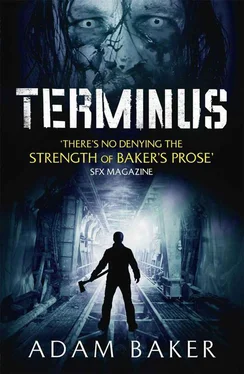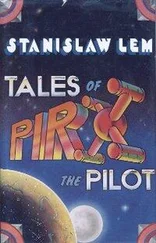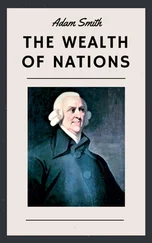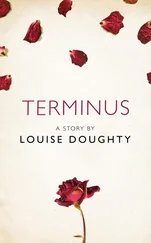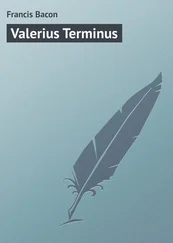We released the gate. Jefferson and his escort ran down the steps to the safety of the station. We sealed the entrance behind them.
The Chief brought a presidential order from the continuity government based at NORAD. As soon as he reached the ticket hall he took the envelope from his jacket pocket and presented it to Doctor Ekks.
Ekks tore open the envelope and read the note.
‘You understand the situation?’ asked the Chief. ‘We haven’t got the manpower or equipment to shift your entire team. You folks are stuck here for the duration. It’s chaos out there. Anarchy. It’s down to you guys now. Continue your work as long as you can.’
Ekks nodded.
‘I understand.’
‘You’ll do what needs to be done?’
‘Count on it.’
The cops glanced around. They checked out our camp. Six medical staff. Twelve guards. Boxes and bunks. Cold, damp subterranean squalor.
We offered them food. They declined. Their chopper was circling Manhattan. It was a small vehicle, limited fuel capacity. A Bell JetRanger commandeered from a Pittsburgh TV station.
There would be room aboard the helicopter for one additional man.
‘Not you, doc. You’ve got work to do.’
We conferred. Lawson, the youngest member of the 101st platoon, drew the most votes. He shook hands and said goodbye. We gave him letters to pass to our relatives, if they could be found.
We locked the gate after they left, and listened to the sound of distant gunfire as they fought their way back up Lafayette to the chopper.
We were now stranded. Those of us left behind knew there was virtually no hope of rescue.
Ekks showed me the decree. Thick note paper. The presidential seal. An unrecognisable signature. Permission to apply ‘extraordinary therapeutic measures’ in our search for a cure.
‘You must choose,’ Ekks told me. ‘You must make the selection. One of the prisoners must be sacrificed. You will decide which of them is the ideal experimental subject, the healthiest physical specimen. That is your burden. You must decide who will die.’
We had four captives. Very few medical records. No prison files.
Wade. Judging by his tattoos and blond mullet, he was some kind of biker. He was from Texas. I have no idea how he came to be imprisoned in New York.
Lupe, aka Lucretia, aka Esperansa Guadalupe Villaseñor. She refused to divulge any background information, but her short, violent life was etched in her skin. A map of Honduras on her shoulder. Dead gang brethren inscribed on each bicep. Guns, knives and hypodermics down each forearm.
Marcus Means, aka Sicknote. His skull had been drilled and his thalamus wired with iridium electrodes. A failed attempt to control psychotic episodes using high-frequency electrical impulses. He was lost in nightmares. We had exhausted our supply of anti-schizoid meds and had to quiet his screams with regular doses of Valium. He spent most of each day curled in a foetal ball, staring into space.
Knox. The fourth prisoner. African American. Bright. Articulate. Cooperative.
Time to choose.
I immediately eliminated Means from consideration. His profound mental illness and subsequent brain surgery made him an unsuitable test subject.
Wade was in good physical shape. He was lucid, apparently mentally unimpaired. However, his arms showed signs of long-term intravenous drug use: scaring and collapsed veins. Again, the neurological implications of this drug habit removed him from consideration. A dependence on heroin or methamphetamine would render him an atypical test subject.
Knox and Lupe. Both fit. Both young.
One of them would have to die.
The prisoners were held on the station platform. We had no cells, no containment facilities. Moxon, the orderly charged with guarding the convicts, had drawn chalk squares on the ticket hall floor. The prisoners were confined within the chalk squares. They could sit, lie or pace within the boundaries of their imaginary cell. They could eat from paper plates. They could urinate and defecate in a plastic bucket. They could wash from a basin. But if they stepped beyond the chalk, they would be shot.
I spoke to Lupe first.
I sat cross-legged on the ticket hall floor. She knelt and faced me, the chalk perimeter of her cell between us. She drew a blanket around her shoulders like a shawl.
I’m not sure why Lupe had been sent to Bellevue for psych evaluation. The patient files we rescued from the hospital contained basic medical information. Dosage charts and X-rays. We had no charge sheets or prison documentation. Moxon told me tattoo tears were an emblem of gang-sanctioned assassination. Each tear represented a kill.
I asked Lupe if she was hungry or thirsty. She held out cuffed hands and demanded to be released. I asked if she were cold, if she would like an extra blanket. She looked me in the eye and told me, calm and clear, that I was attempting to use a series of token kindnesses to make myself feel better about holding people captive while the world went to hell, and maybe I should fuck myself.
I shifted position so I could talk to Knox. He sat by the entrance of his cell.
The doorway to each cell was designated by a series of chalk dashes. When the prisoners were escorted to and from their imaginary cells, they were expected to use this demarcated entrance.
Knox sat hugging his knees. He hummed old Motown hits. I gave him a stick of gum.
I liked him. He had been arrested on an assault charge. He told a convoluted story involving mistaken identity and police racism. He was adamant the case should never have seen trial.
He had been transported to Bellevue for treatment to a hip injury following a minor fracas at Sing Sing. A poker game that ended in scattered cards, shoves and recriminations. The prison infirmary had been damaged by a burst water pipe, so he had been sent outside the walls for examination.
I’m not fool enough to think I am a fine judge of character, that I have a deep insight into human nature. But I sympathised with Knox. The pettiest of criminals. No gang tattoos, no track marks. Not a bad man. Not malicious. Just pathetically weak.
Knox or Lupe? Who would you choose?
Lupe deserved to die. Vermin. Irredeemable street trash. A life-long killer. Probably responsible for a dozen deaths, gang rivals shot or knifed in retaliation for near-imperceptible violations of her honour code. Most people would circle her name without hesitation.
But what is evil? Is murder part of the normal spectrum of human behaviour? Or is it indicative of illness? If Lupe was a psychopath, incap-able of empathy, could that be regarded an actual physical abnormality, rather than simply a mental state? Her anti-social behaviour might be the result of some malformation of the central nervous system. Or it might be the result of post-natal injury. A blow to the head, some form of traumatic encephalopathy. As a doctor, should I regard her as a defective specimen? An imperfect test subject? Was she, on some basic level, less than human?
I handed Ekks the list knowing, as I did so, I had set the death machine in motion.
A folded sheet of paper. Four names. Three crossed in red. A big green tick next to KNOX.
Ekks lay a hand on my shoulder. His solemn, wordless Thank You.
I condemned an innocent person to death. Played my role with cold, clear deliberation.
I did the right thing. I did what needed to be done.
But I’m not the man I used to be. I have become something else. Something ugly. Something broken.
Tombes slept, back against the wall.
He swallowed. He choked and convulsed. He woke, and found a thin string of drool hanging from his mouth.
‘Christ.’
He took a bandana from his pocket. He dabbed his chin and shirt. He sipped bottled water and rinsed the taste of vomit from his mouth.
Читать дальше
